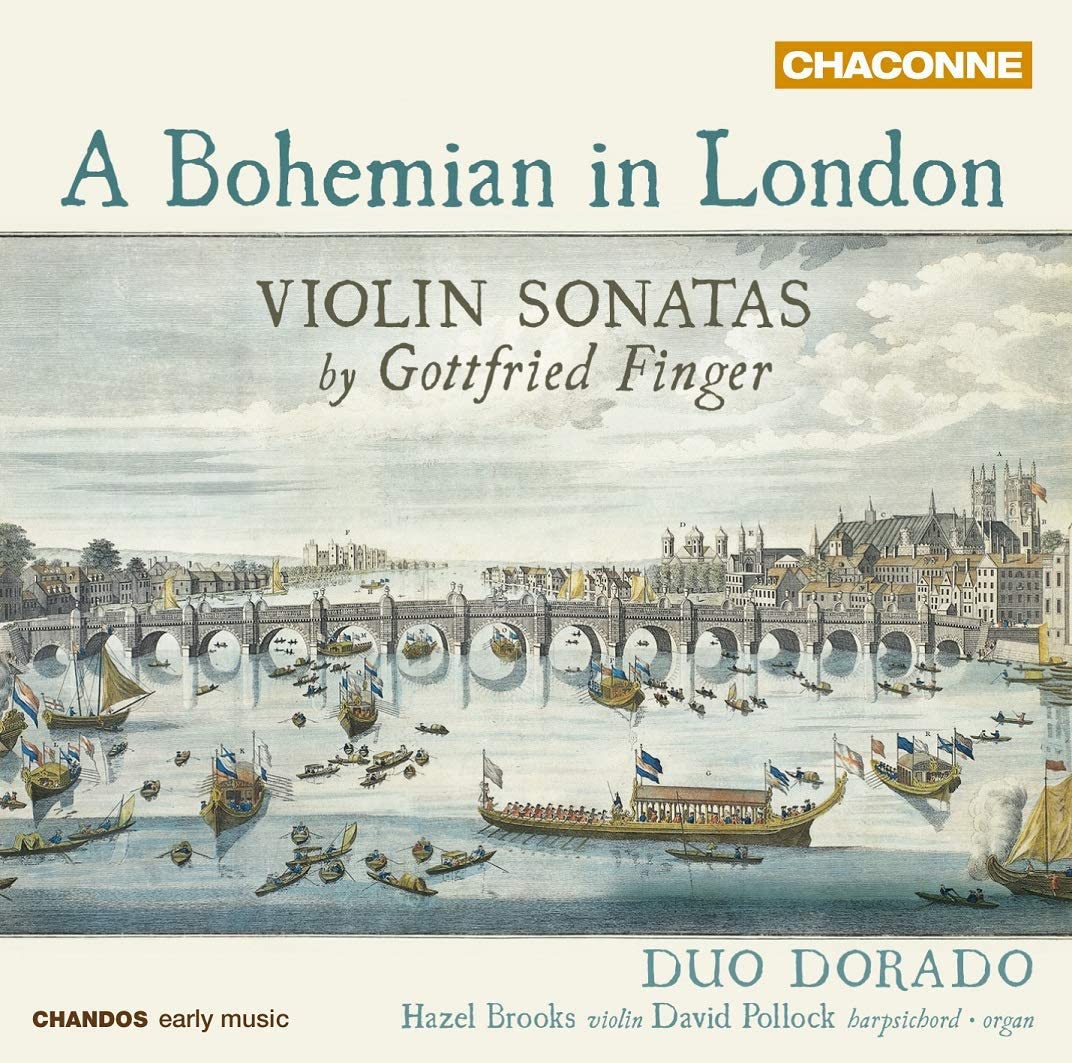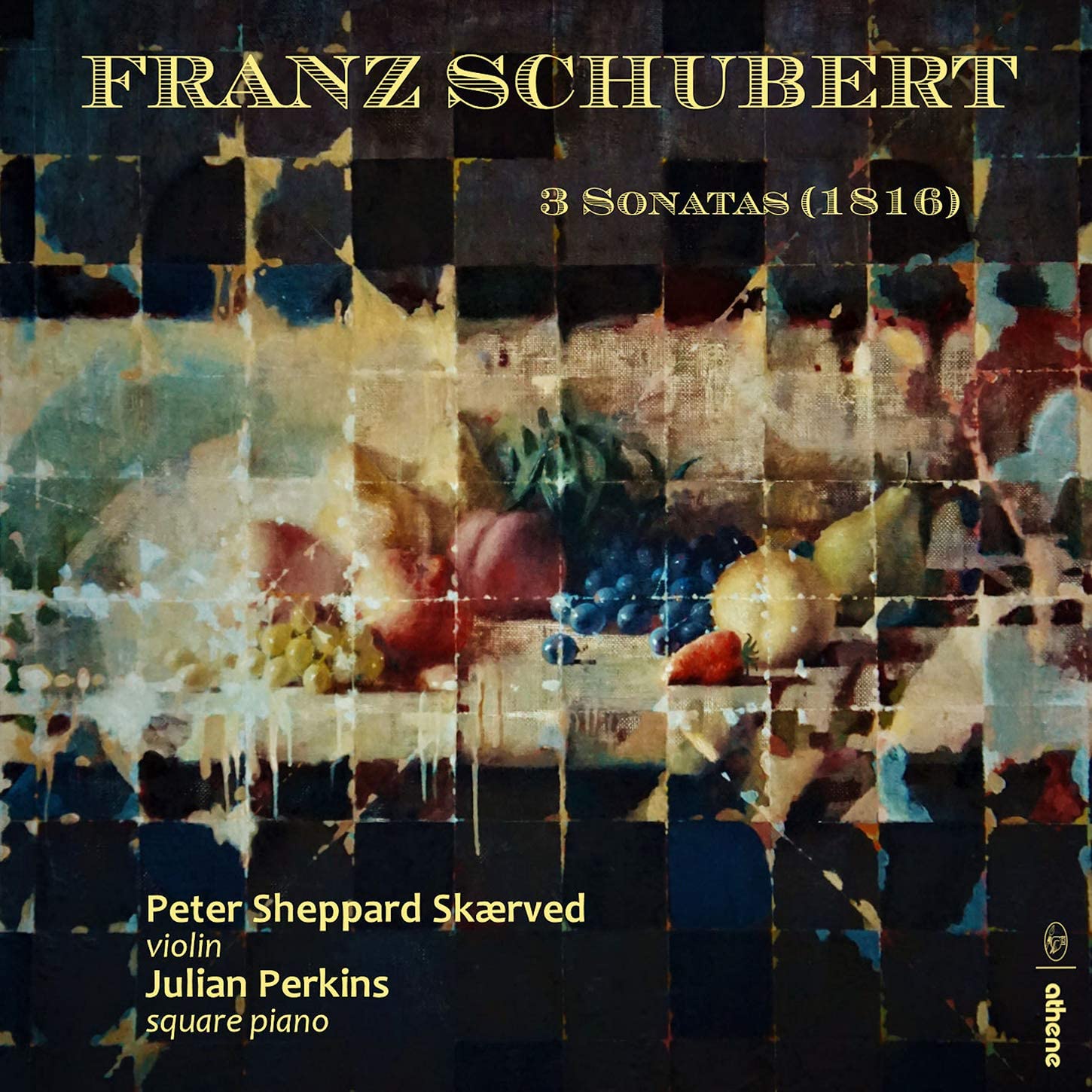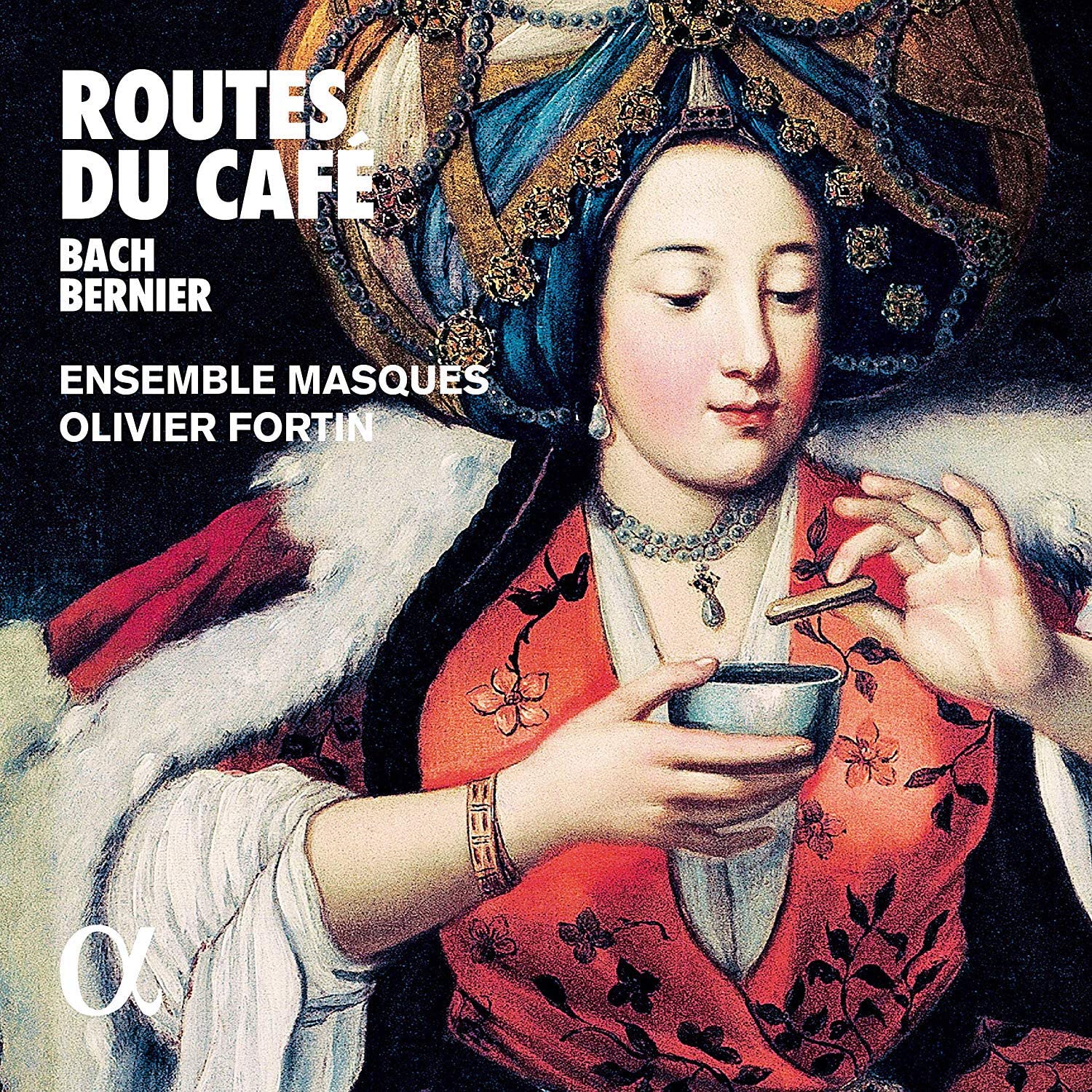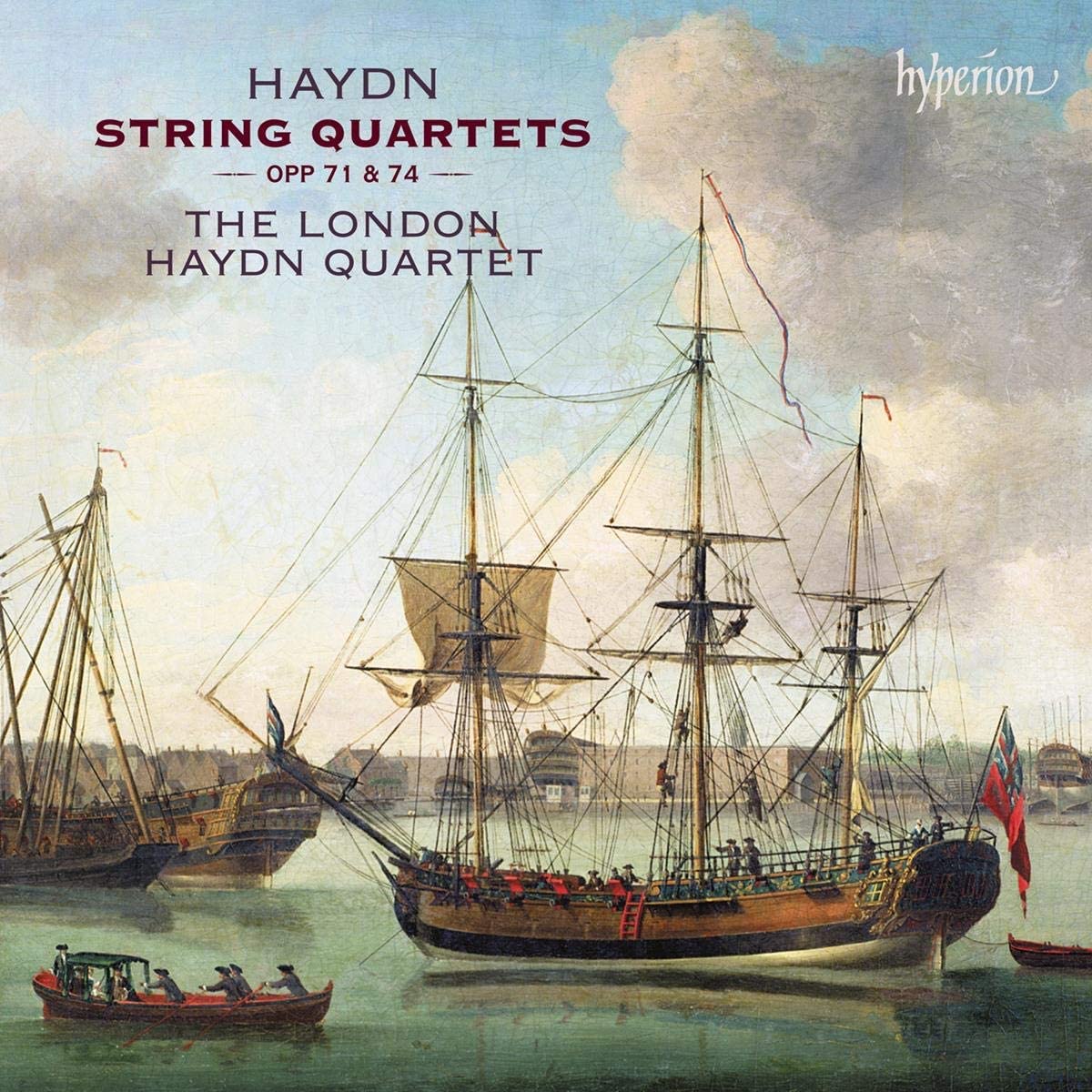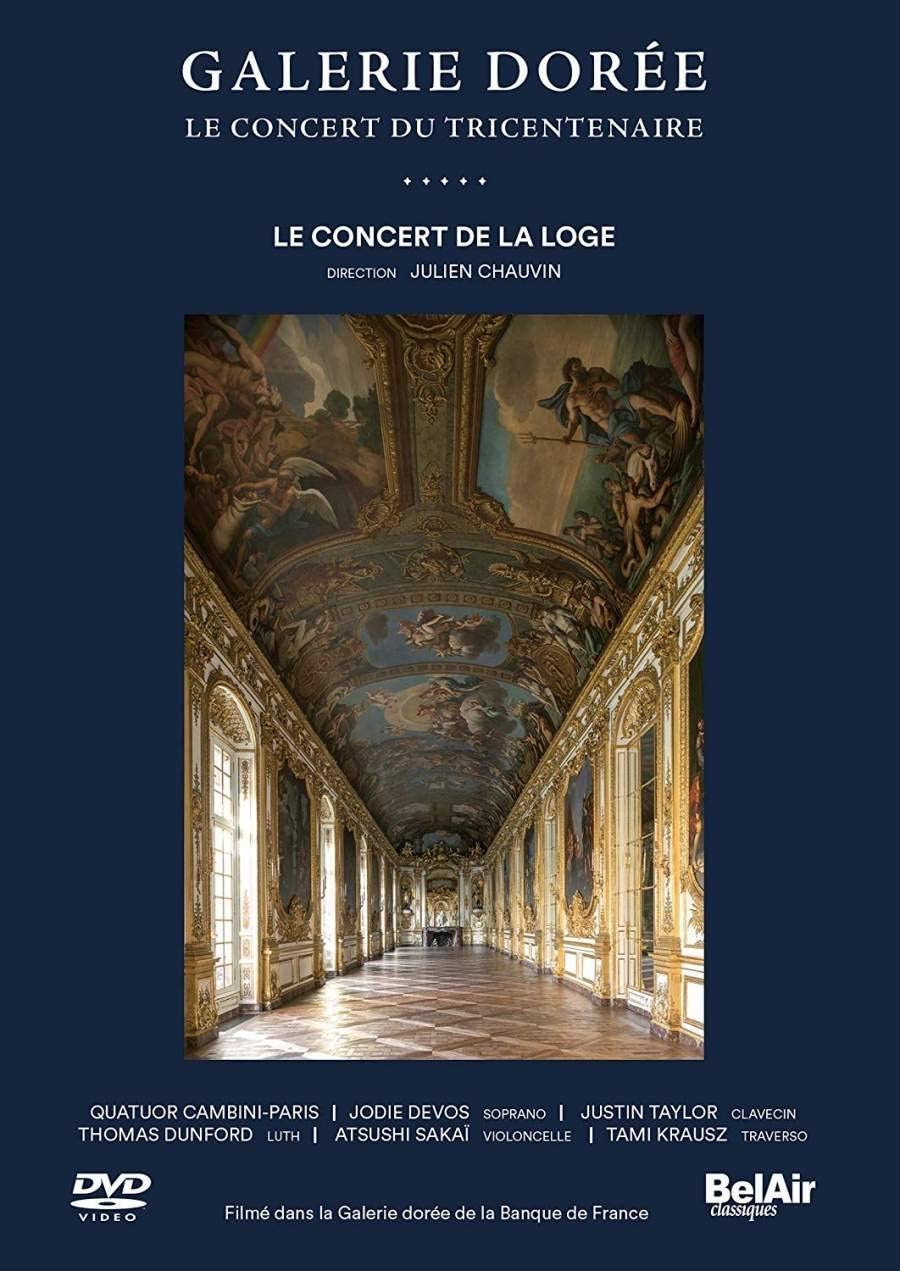Duo Dorado (Hazel Brooks violin, David Pollock harpsichord/organ)
78:00
Chandos Chaconne CHAN 0824
Click HERE to buy this CD on amazon.co.uk
Bohemian Gottfried Finger was just one of an army of European composers who made their way to the musical ferment of late 17th-century London, arriving in 1685 and leaving in a strop in 170,1 having come last in a musical competition! A composer of considerable talent and a catholic, Finger was snapped up by James II for his Catholic Chapel, but on the latter’s flight to the continent, Finger had to make his own way in the cut-throat world of freelance music-making. A British Library manuscript Add. 31466, a bumper collection of 66 violin sonatas, provides all of the sonatas recorded on this CD, which prove to be works in a fascinating range of styles and of limitless imagination – hard to reconcile this with the verdict on his ill-fated entry in the ‘Prize Musick’ which was deemed to be old-fashioned. It seems likely that Finger’s Catholicism and his foreign status probably weighed more heavily in his defeat than his perceived lack of talent. Hazel Brooks plays an 18th-century Viennese violin, which possesses an ideal glowing tone and crisp attack for Finger’s lyrical music, while David Pollock, playing a replica Ruttgers/Hemsch harpsichord and a continuo organ, provides a wonderfully sympathetic and responsive accompaniment. Brooks deftly ornaments the violin part, and clearly enjoys Finger’s spontaneous and often rather chromatically daring idiom. Finger was also a renowned trumpeter, and I have played a trio sonata by him for trumpet, violin and continuo on Baroque clarinet, becoming aware in the process that this was a composer with a distinctive musical voice who deserved further attention. The Duo Dorado are clearly of the same opinion, and this recording is a valuable advance in our awareness of his many musical virtues.
D. James Ross
